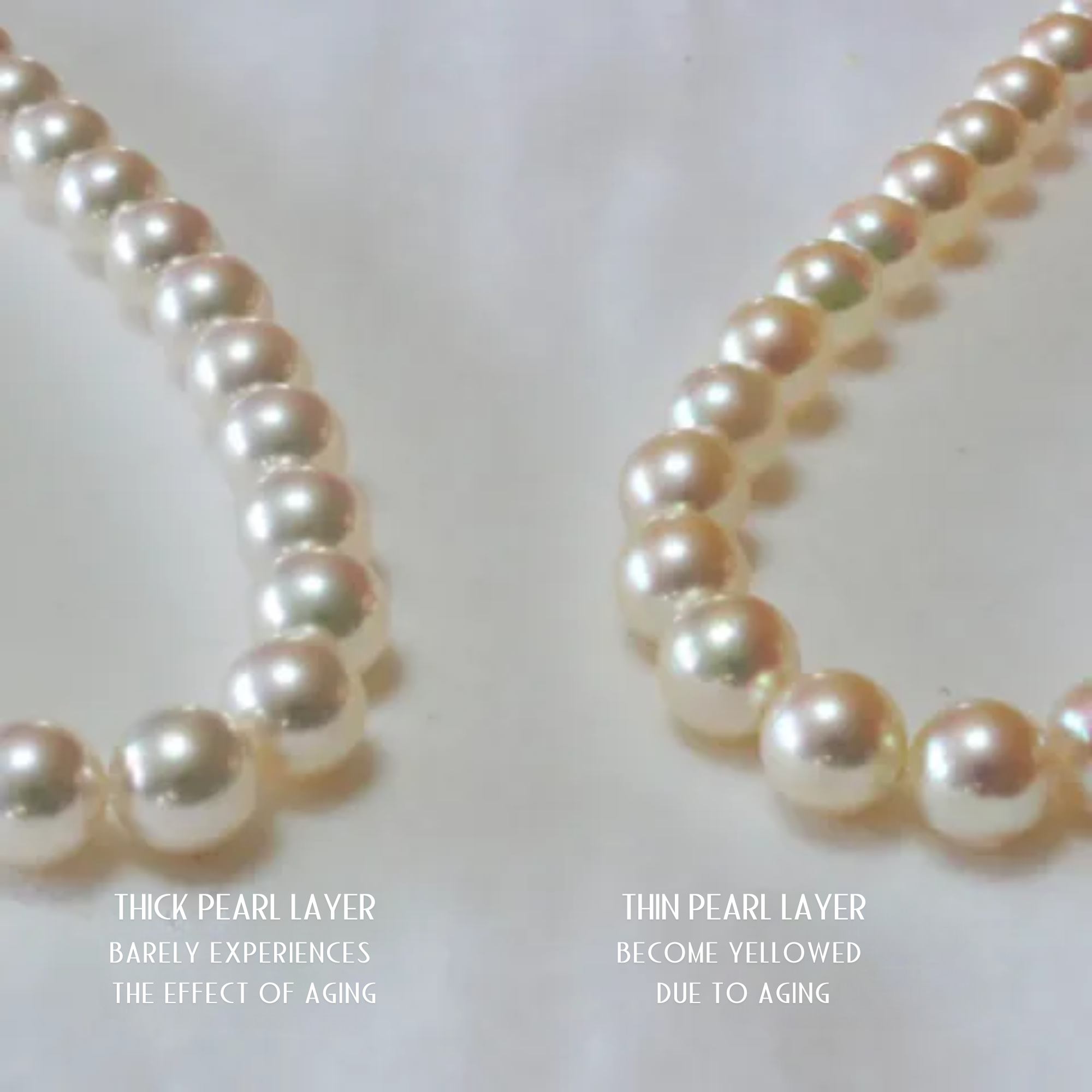Akoya pearls are considered precious and valuable due to several factors. Firstly, the production of Akoya pearls is limited as they require specific conditions for cultivation, unlike freshwater pearls, which can produce 20-30 pearls in one cycle. Akoya pearls grow at a slower pace, with only one pearl produced per oyster's lifetime. This significant difference in quality and production volume contributes to the rarity and higher value of Akoya pearls, making them sought after for collection and investment purposes.
In terms of surface quality, common small imperfections found in Akoya pearls include pinpricks, small bumps, and surface growth lines. Completely flawless pearls are extremely rare, and therefore, the highest-quality Akoya pearls, known as Tennyo pearls, are often sold as individual loose pearls rather than being made into necklaces. As a result, the value of a single Akoya pearl suitable for necklace production may be slightly lower than that of a loose pearl.
There is a misconception among consumers that untreated, naturally colored pearls are superior. However, this is not necessarily the case. Untreated pearls do not always indicate better quality, and treated pearls do not necessarily imply lower quality. In fact, in the market, a pink-toned treated Tennyo pearl often commands a higher price compared to an untreated pearl with a yellowish hue. The reason for treating pearls is to enhance their color while maintaining or even improving their overall quality. The majority of Akoya pearls in the market are treated, and their value is determined by their attractiveness to buyers.
In summary, the value of Akoya pearls should not solely be based on their natural characteristics but also on the enhancement of their color through treatment. This does not impact the quality or lifespan of the pearls. Therefore, treated Akoya pearls can have even higher value than their untreated counterparts.



































